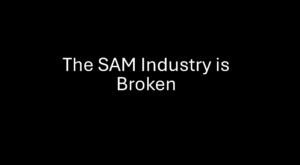April 2025: Recent shifts in U.S. trade policy have reignited a global conversation around tariffs, technology, and the complex interdependencies of modern supply chains. With fresh rounds of tariffs imposed by the U.S. and retaliatory measures swiftly announced by key global economies, the consequences for the tech industry—especially IT services and software—are beginning to surface.
While the immediate headlines focus on hardware price hikes and geopolitical jostling, the deeper implications for digital infrastructure, cloud services, and enterprise IT ecosystems are equally pressing. As service providers and customers adapt to a rapidly shifting environment, firms like Appstrato are stepping up to help businesses navigate the uncertainty with strategic foresight and resilience.
A Quick Recap: What’s Changed?
On April 2, 2025, the U.S. administration introduced a sweeping tariff strategy, applying a baseline 10% tariff on imports from all countries, and additional country-specific surcharges—including a 34% tariff on goods from China and 32% on those from Taiwan. These tariffs are aimed at reshaping trade flows and stimulating domestic manufacturing. However, their effects are proving far more systemic.
In response, China and the European Union have enacted retaliatory measures. China, for instance, has introduced counter-tariffs on U.S. goods and escalated its export controls on rare earth materials—critical inputs for the tech sector. The European Commission, meanwhile, has condemned the move, warning that these policies threaten global trade stability.
Impact on the IT Services Sector
Although services are not directly tariffed, they are inextricably linked to the products and infrastructure they support. IT services firms, especially in the U.S., India, and Europe—are now contending with increased delivery costs, shifting timelines, and tighter client budgets.
Key impacts include:
-
Rising hardware costs, delaying enterprise tech refresh cycles and increasing TCO for IT projects.
-
Slower rollouts of cloud infrastructure, particularly hyperscaler expansions and AI infrastructure builds. Reuters notes that tariffs could “stymie Big Tech’s U.S. data center spending spree” by increasing the cost of imported components like servers and cooling systems.
-
Deal cycle friction, as clients in logistics, manufacturing, and retail sectors—heavily exposed to tariff shocks—postpone or reprioritize transformation initiatives.
The Wall Street Journal also reported that tech manufacturers like Nvidia have seen their share prices drop amid concerns that tariffs and export controls will throttle demand for high-end electronics and cloud compute capacity.
Software Prices: Will the Shock Be Passed On?
Software licenses and cloud subscriptions may not be tariffed directly—but that doesn’t make them immune.
Major cloud vendors and software providers (e.g., Microsoft, Google, AWS) are already reviewing pricing models in light of rising infrastructure costs and regional volatility. The result could be:
-
Higher prices for SaaS and platform subscriptions
-
Revised enterprise licensing terms, particularly in cross-border contracts
-
New pricing tiers, tailored by geography to reflect divergent cost structures
For procurement and finance leaders, this means renewed pressure to optimize software spend, maximize licensing value, and re-evaluate vendor lock-in.
The UK and Europe: Caught in the Crosswinds
While not the primary targets of recent U.S. tariffs, the UK and EU economies are nonetheless affected.
The British Retail Consortium has downplayed the short-term effect on consumer goods, but analysts agree that extended tariffs on technology goods and retaliatory measures targeting digital services would likely increase costs for cloud consumption and vendor-provided software over time [BRC, 2025].
European tech buyers and government entities may face price inflation, licensing disruption, or even reconsideration of U.S.-based vendors for politically sensitive workloads.
Tech firms operating in the UK are advised to revisit contractual clauses—especially pricing review triggers, force majeure conditions, and service credits—amid this pricing turbulence.
The Bigger Picture: Supply Chain Resilience and Strategy
What was once a strength—the tech industry’s globalized, just-in-time supply chain—has now become a strategic vulnerability. As The Guardian aptly noted, what started as a defensive trade maneuver may now “create inefficiencies and regional misalignments” that slow innovation and increase costs
Yet within this disruption lies opportunity. Forward-thinking CIOs and IT strategists are responding by:
-
Diversifying supplier relationships and looking beyond traditional Tier-1 vendors.
-
Reassessing cloud contracts and evaluating hybrid or multi-cloud strategies to maintain flexibility.
-
Prioritizing software asset management (SAM) and usage optimization to extract value from existing investments.
Where Appstrato Fits In
At Appstrato, we understand that uncertainty is not just a risk—it’s also a trigger for transformation. Our IT services and strategy teams are already working with clients to:
-
Review IT Spend Exposure: We help assess how rising infrastructure and software costs may impact your technology stack.
-
Enhance Licensing Strategy: Through our Fractional ITAM and SAM services, we identify savings and prevent compliance risk.
-
Design Resilient Architectures: From cloud to on-prem rebalancing to localized delivery models, we support clients in building more adaptable infrastructures.
Our global platform, supported by a flexible service model, enables clients to quickly pivot in response to geopolitical, financial, or operational change—without compromising quality or scalability.
Conclusion: A Time for Clarity and Control
Tariffs may seem like a distant, policy-level issue, but their echoes can be felt throughout the technology landscape. For IT services firms and their clients, now is the time to engage, re-evaluate, and adapt. By focusing on optimization, flexibility, and transparency, businesses can not only weather the tariff storm—they can emerge stronger and more strategically aligned.
As the digital economy continues to evolve, Appstrato remains committed to guiding organizations through complexity—with clarity, confidence, and control.




